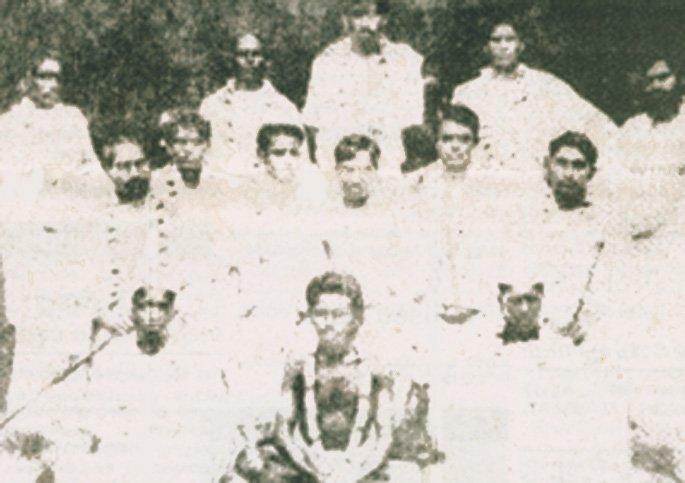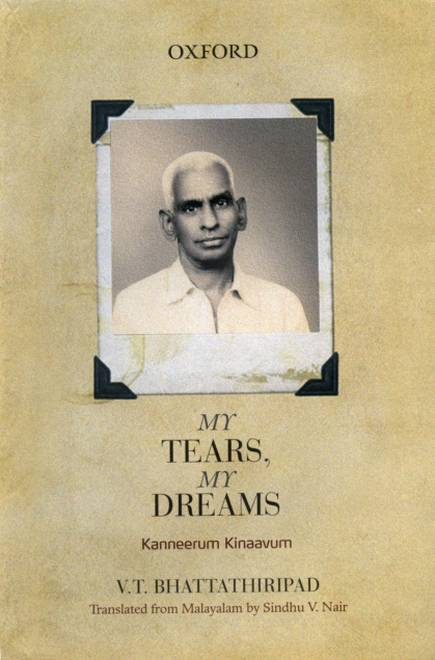In January 2018, tensions built up at the site of an ongoing struggle by Dalit residents in Vadayampady near Kochi. Already for a year, Dalit families in the area had been protesting against a “caste-wall” that was built around a public ground near the Bhajanamadam Bhagavathy temple by the Nair Service Society (NSS). The wall had cut-off access to 95 cents [approx. 41,370 sq. ft] of land that was shared by people in the locality, including Dalits who have inhabited the area since the late 1960s. The same year saw the gruesome murder of Kevin, a twenty-three-year-old Dalit Christian boy by the family of his upper-caste Christian girlfriend, in what has since been considered the first case of honour-killing in modern Kerala. Other cases from the recent past like that of Dalit auto-driver Chitralekha, the lynching of tribal youth Madhu, and the controversy around artist Asanthan’s dead body all suggest that over the last few years, caste has reared its ugly head both in public and private spaces. Although most go unnoticed, some gather enough attention to challenge—even shock—the collective consciousness of a society that has taken secularism and tolerance for granted. This, because Kerala has for long taken pride in its progressive and secular ethos, and a development model based on social equity and inclusion.
The scale and magnitude of the recent events suggest that they can no longer be put aside as aberrations. Each time a case like this comes to light, discussions and debates ensue in the public sphere about the need to “uphold the progressive ethos” that have been a result of the social, political and economic reforms of late-nineteenth and early-twentieth centuries. What is often left out in the loud television debates, evening teashop discussions and private dinner-table conversations are the nuances of the spatiality and context in which Kerala’s secular public consciousness was shaped—a spatiality which has at its heart the negotiations between private and public spaces that have cajoled modernity in Kerala. The resurgence of caste today cannot be studied without tracing the origins of how caste (and gender) relations were negotiated in the early modern phase in Kerala not just in the public places like markets, schools, roads and temples, but also within the confines of the home.
Negotiating Caste and Space in early-modern Kerala
The Vaikom Satyagraha (1924-25) to open the roads around the Vaikom temple to people from the lowered castes was led by leaders of Nair, Ezhava, Pulaya and Brahmin communities, together. It was the first time that people from across castes had physically come together in a large scale. The Nair community’s efforts were led by Mannathu Padmanabhan, a well-known social reformer who had already been involved with the NSS. In his memoirs, Mannathu writes in detail about the various initiatives taken by the leaders to create a secular movement, and his experiences of mobilising the masses for this purpose through marches, public speeches and meetings. Even as these efforts were shaping the new secular public in Kerala, Mannathu narrates an incident which throws some light on how a simultaneous negotiation was happening within the private space of his home.

One morning, Azhakan (belonging to the Dalit Pulaya community) and a Namboothiri Brahmin visited Mannathu at his home with updates on the Satyagraha. Mannathu invited them to join him for breakfast as they spoke. He writes:
“On resuming our talk, the thought of serving food to Azhakan struck me. Could I allow him to sit along with us while taking breakfast? He was a Harijan. I had not so far taken food in the company of Azhakan’s caste. These thoughts disturbed me. I thought to myself that if this posed so much trouble to me, what would be the case with my mother?”
It is surprising enough that despite his long life as a social reformer, he had never dined with someone from a lowered caste before. The scene has been set here for a confrontation between Mannathu’s “public” and “private” identities, and the outcome reveals the delicate negotiations which shaped modernity in Kerala. Here, the home—a private space—is where the ambiguities of Mannathu’s public image need reconciliation. He writes that he saw it as a test from God who had “chosen” his home as a site of “penance for the sins committed by [his] ancestors against Pulayas for centuries.” That this is happening in the backdrop of an ongoing agitation where Nairs were fighting alongside the Dalits makes this incident even more fascinating. Despite being on the forefront of the public movement, here in the private space of his home, contradictions continued.
He requested his mother to serve them food, and she conceded reluctantly. But the tensions did not end there: “Who will remove the plates? Each one could take his? But that is not how we treat our guests at home. If it is changed today, it would be obvious that it was due to the presence of Azhakan”. After weighing his options, Mannathu had an idea:
“I asked Azhakan who was about to take his plate, to wash his hands. When all of them had left, I enquired of my mother who would remove them, so that she would not have any embarrassment in the matter. She replied that the servant maid would attend to it. On hearing this, the servant maid said that she would not wash the plate used by a Pulaya. I did not feel the least annoyed at her words. Saying thus, as none (sic) would see, I will wash them myself, I took those plates. Thereupon, my mother took them from me, and washed them” [emphasis added]
We see two interesting things here. Firstly, “not being seen” was a crucial caveat for him to consider washing the plates himself. Sending away Azhakan—thereby distancing himself from “the public”—was important for Mannathu to negotiate how the dishes would be cleaned. The indication of separation of his private and public selves is at play here. The guests do not see this negotiation, and Mannathu’s secular public image is restored. Secondly, the negotiation reached is a reconciliation of gender roles and spatial binaries. Away from the gaze of the “outsider”, gender roles are reified when Mannathus’ mother eventually takes away the plates and washes them.
These negotiations appear to have been a common phenomenon of households at the time. This is not to say that they all had similar consequences. V.T. Bhattathirippad (Brahmin), in his memoir, narrates a very similar incident when he, along with a Tayya Panikkar (an Ezhava), were invited to dine at Nalapat Narayana Menon’s (Nair) home. He observes:
“…a Nambuthiri, a Nair and an Ezhava were dining together, sitting on the same floor-mat; being served by Nalapat’s sixty-year-old mother. Nalapat’s community reform wasn’t on his tongue, but inside his home”

Despite the similarities and differences in the two incidents, what is noteworthy is that the ambiguities of such negotiations were commonplace, a sign that the caste continued to remain active within closed circles and private spaces even as secular ethos were shaping Kerala’s public sphere.
The wave of socialism in the 1930s and the relatively quick replacement of “class” as a natural alternative to “caste” meant that the questions of caste—and gender—remained unresolved within private spaces. The assumption was that by solving the class issue in the long run, other social evils like caste and gender could automatically be resolved. Meanwhile, though, the cost paid was that religion, along with caste, was confined to being “private affairs”. This sense—that religion and caste remained a private affair—was central to the secular public sphere that emerged in Kerala. This is why despite secular credentials, family affairs like births, deaths and marriages continued to practice caste and religious practices. The blurring of lines between the public/private since the 1980s has meant that these contradictions have resurfaced, leading to the incidents we see in contemporary times.
Beyond Binaries: Re-envisioning space in the contemporary
From the 1980s, there has been a reconstruction of how the public/private binaries have been perceived. On the one hand, television—and eventually, the internet—have brought the world into our fingertips, blurring the lines between spatial binaries even further. Meanwhile, politics itself changed as the new feminist, Dalit and environmental movements have increasingly stressed on the importance of “personal as political”. Meanwhile, the rise of religious organisations like the Rashtriya Swayamsevak Sangh quickly gained grounds after the 1980s, owing to social and political changes both within and outside Kerala. Religion allowed them to make successful interventions in agitational politics but also the lived experiences of individuals. Gradually, they managed to “de-privatise” religion and bring it back into the public sphere, dragging out with it, the century-old contradictions between caste and spatiality. The resilience of a public secular society is being tested as its fragile underpinnings unravel.
Only when we acknowledge the historical context in which caste relations emerged in modern Kerala can we begin to comprehend incidents like Kevin’s murder, or the construction of the caste-wall of Vadayampady (ironically by the Nair Service Society which had backed the Dalit community in the Vaikom Satyagraha a century earlier). In other words, their roots may be traced back to the apparent public/private distinctions upon which Kerala’s secular modernity emerged. The first step, therefore, is to move beyond these spatial dichotomies. Instead, the attempt must be to reconcile the two as being forged together in a “dialectical unity”. The questions that we ask of spatiality today must be contextualised as such, and the role of semi-publics (or micro-publics, or semi-privates) should all be taken into consideration because this is where caste relations have been shaped over the last century in India. Only then can we see the complexity of these negotiations, and the limitations of spatial binaries in explaining them. Unless we address the questions of caste within lived spaces, any amount of secularisation of a “public sphere” will remain incomplete.
